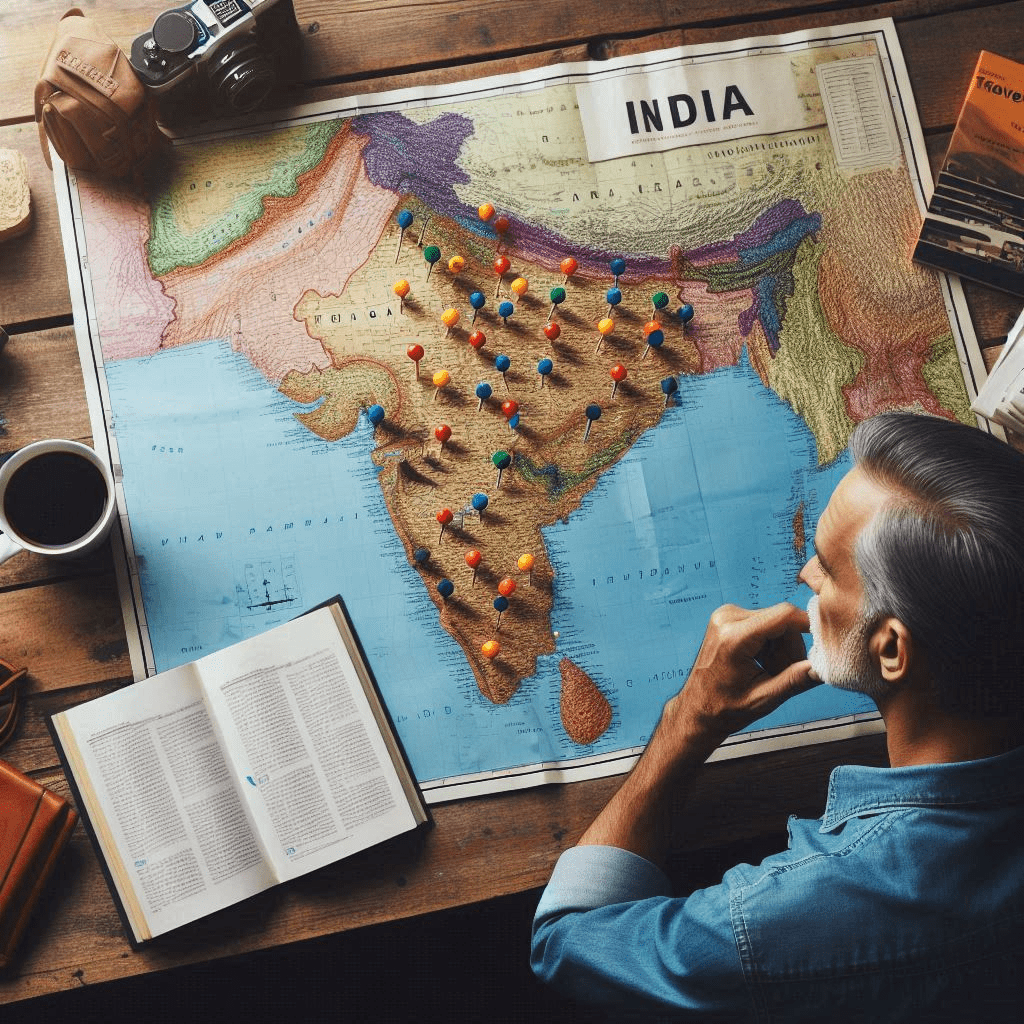India is a land of vibrant colors, rich history, and diverse landscapes that can captivate any traveler. With 3.2 million square kilometers of bustling cities, tranquil beaches, and towering mountains, planning a trip here can feel daunting. To make your journey rewarding and stress-free, focus on quality over quantity. Here’s how to craft a memorable Indian adventure tailored to your interests.
Why Less is More in India
India’s Vastness
India’s sheer size means that trying to visit too many places in one trip can leave you exhausted. For example, traveling from Delhi in the north to Kerala in the south can take 2-3 days by train or a 4-hour flight plus local transfers. Rushing through cities like Jaipur, Varanasi, and Mumbai in a week will leave little time to soak in their unique vibes. Instead, pick 2-3 destinations to explore deeply.
Dive Deep into Each Destination
Focusing on fewer places lets you truly experience India’s soul. Wander through Delhi’s Chandni Chowk market, tasting spicy chaat and bargaining for handwoven textiles. In Rajasthan, marvel at Jaipur’s Amber Fort or Udaipur’s shimmering Lake Pichola. If relaxation is your goal, Goa’s Palolem Beach offers golden sands and fresh seafood shacks. Spending 3-4 days in each spot lets you connect with locals, savor regional dishes like Rajasthani dal bati or Goan fish curry, and soak in the atmosphere.
Planning Your Indian Journey
Match Your Itinerary to Your Interests
India has something for everyone. History lovers can explore the Taj Mahal in Agra or the ancient temples of Hampi. Adventure seekers can trek in Himachal Pradesh’s Spiti Valley or raft on the Ganges in Rishikesh. For wellness enthusiasts, Kerala’s Ayurvedic retreats or Rishikesh’s yoga ashrams offer rejuvenation. Identify your passion and build your trip around it. For instance, a 10-day trip could focus on Rajasthan’s forts and palaces or Kerala’s backwaters and spice plantations.
Account for Travel Time
Traveling between Indian cities takes time. A train from Delhi to Jaipur takes about 5 hours, while a bus from Mumbai to Goa can take 12-16 hours. Domestic flights are faster but require time for airport transfers. Use overnight trains, like the Rajdhani Express, to save daylight hours for exploration. Check schedules on IRCTC (Indian Railways) and book early, especially during peak seasons (October-March). Plan buffer days to avoid feeling rushed.
The Joy of Slow Travel
Soak in the Sensory Experience
India is a sensory overload in the best way. From the aroma of street-side jalebis frying in Old Delhi to the rhythmic chants at Varanasi’s ghats, every moment is vivid. Join a local festival like Diwali (October/November) for fireworks and sweets or Holi (March) for colorful celebrations. Eat where locals eat—try dosas in Bengaluru or momos in Darjeeling. Slow travel lets you savor these moments without a packed schedule.
Leave Room for Spontaneity
Don’t overplan. Leave gaps in your itinerary for unexpected discoveries, like stumbling upon a hidden café in Pondicherry or joining a village cricket match in rural Rajasthan. Chat with locals—they might invite you to a family chai stall or recommend a lesser-known temple. These unplanned moments often become trip highlights.
Be Ready for the Unexpected
Stay Flexible
India’s charm includes its unpredictability. Train delays, festival crowds, or sudden monsoon showers are part of the experience. Carry a reusable water bottle, portable charger, and comfortable shoes to stay prepared. If a plan changes, embrace it—getting lost in Jaipur’s bazaars or detouring to a roadside dhaba (eatery) can lead to unforgettable memories.
By choosing fewer destinations, planning for travel time, and staying open to surprises, your India trip will be a journey of connection and discovery. Whether it’s watching the sunrise over the Taj Mahal or sipping coconut water on a Keralan houseboat, India rewards those who take their time to explore its heart.
Categories :


